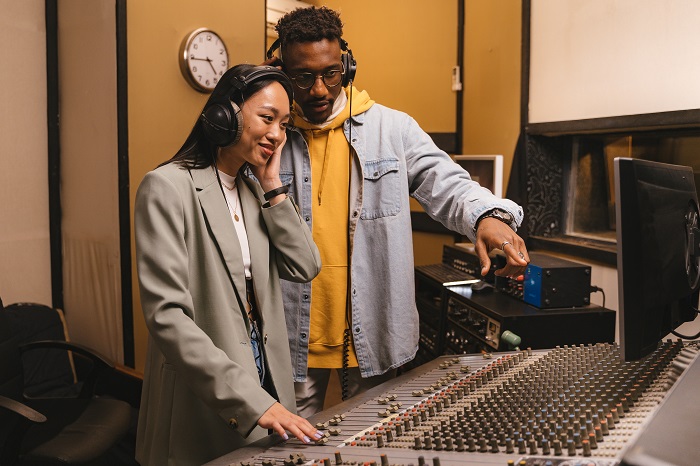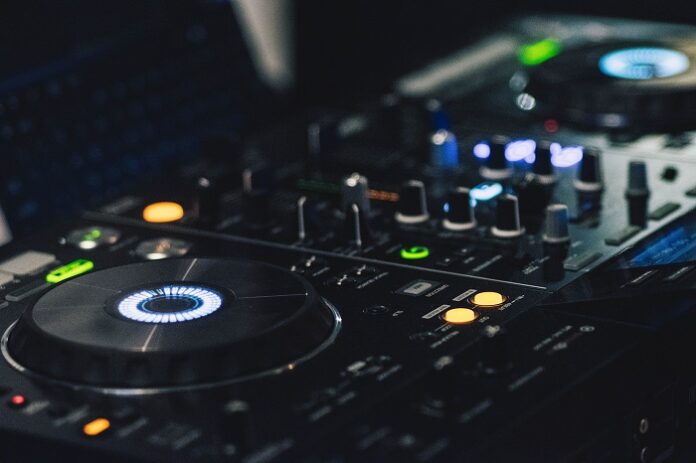Mixing music is a lot easier than it used to be, thanks to technology. Today, almost anyone can access the basic tools needed to get started as a music producer and that’s not a bad outcome at all.
Contrary to what some may believe, having easy access to the tech and knowledge needed to mix tracks has created opportunities for a much wider range of people to showcase their talent. Not that everyone who mixes music is actually any good, but several individuals with real talent can hone it with relative ease, thanks to the advancements made in digital tech.
All that being said, there is still a stark difference between simply mixing tracks on an app and doing it well enough for the final mix to turn out really good. Technology may have made things more accessible, but you will still be the one responsible for mixing those tracks. To help you get started on your way, we will share some crucial tips from industry experts next.
Learn How to Beatmatch
Beatmatching, aka pitch cue, is a trade skill that DJs use while mixing tracks to match or synchronize the beats of the two separate tracks seamlessly at the connecting point. If you do not know how to beatmatch, you will not be able to produce quality music. It takes time and practice, but before anything else, you need to know the steps first. You can learn how to beatmatch and a lot more from the linked article.
Define the End Product
Defining the end product is a corporate term for sure, but the rule is just as applicable to music producers as well. Even when you are not under contract or tasked with producing music commercially yet, it is important to develop the habit of defining a goal first. No one is against an artist taking the liberty of experimenting without set goals, but that makes more sense at an advanced stage when you have already developed the necessary beatmatching and mixing skills sufficiently.
When you are still learning, you should have a clear idea of what you are aiming for. Music needs direction and especially so when you are mixing tracks. It is much easier than it sounds because all you need to do is jot down the answers to a few common questions such as:
Who is going to listen to your mix (audience)?
– If you are your only audience for the time being, what kind of mixes do you like listening to?
– Do you have a reference track/mix to model your music after?
– Do you want it to be a dance mix for electro nightclubs or romantic pub nights?
– Will there be vocals?
– If vocals are part of the mix, are they syncing in perfect harmony with the beats?
It may take a few tries to get your music up to the standard you want it to be but defining exactly what you want before getting started will significantly cut down on the trial-and-error time.
Take a Dynamic Approach
Experienced DJs will tell you that a dynamic approach is crucial to retain, even if you have spent years in the industry. A dynamic approach is the willingness to make changes as you go about mixing your tracks if the situation and the audience demands it. Listen to your own mixes in smaller segments and then listen to them again in larger segments. See if the beats are syncing properly at every juncture.
Figure out how to beatmatch the tracks better if something sounds just a bit off on your headphones, rather than ignoring them. When you are willing to make changes on the go and improve the mix as necessary to meet the final goal, you will always have more hits on your hand than flops. You can of course, learn from the flops as well since listening to your own older, less matured work will help you as a music producer to understand how far you have come, what your shortcomings were in the tracks, etc.
Compare: Reference Vs Creation
Once you have defined the kind of mix you wish to produce, it would be ideal to have a reference track/mix to work with. A reference track is what a music producer considers to be the perfect example of what they are trying to achieve through the project. This ideal mix is perfect for comparing what you consider to be ideal for the project with what you have created so far.

Follow the steps mentioned next to hone your mix to excellence:
– Ensure that the reference mix itself is a close, if not perfect representation of what was defined as the project’s goal
– Import the track into your digital audio workstation (DAW)
– Find and then put the busiest portions of the reference mix and your own mix on loop, at the same exact volume
– As you now have a live, constant and synchronized reference to work with, listening and finding unwanted shrillness, excessive bass, – noise, and beat loss should be much easier
– Note how good your stereo imaging is in comparison to the reference
Keep in mind that most DAWs are far too advanced these days to be very picky about them and even free DAWs do a decent enough job when you are learning how to beatmatch. However, you will need to upgrade your DAW to something recognized by the professionals before going public. Image-Line FL Studio, Apple Logic Pro, Reason, and Steinberg Nuendo are all good options to consider if you are serious about learning how to beatmatch and then producing professional-grade music later on.
Use these tips to help refine your skill of mixing tracks. Let us know how you get on.














![Anyma Launches [UNVRS] Residency With Jaw-Dropping AV Show](https://www.ravejungle.com/wp-content/uploads/2025/07/anyma-unvrs-ravejungle-100x70.jpg)

